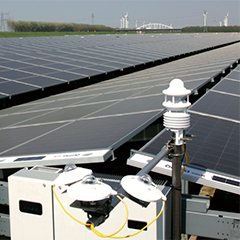Explaining PV plant monitoring to IEC 61724-1
Reliable measurement of solar irradiance, and other environmental parameters, is crucial to accurately calculating the performance ratio (PR) of a solar energy plant. IEC 61724, published in March 2017, is the latest and most comprehensive international standard to address these issues. But what does it mean?
IEC 61274-1 Photovoltaic system performance – Part 1: Monitoring also serves as the basis of two standards for performance analysis that rely upon the data collected, IEC TS 61724-2 and IEC TS 61724-3. Part 1 outlines equipment, methods, and terminology for the performance monitoring and analysis of solar energy PV plant systems; from irradiance input to AC power output. It is applicable to fixed angle, single-axis tracking and dual-axis tracking conventional PV modules and to concentrator (CPV) systems. It does not currently cover bifacial installations.
For Classes C and B, it is acceptable to estimate some measurements from other nearby and reliable data sources, but these are rarely available. For Class A all parameters must be monitored at the site.
Explaining PV plant monitoring to IEC 61724-1
Reliable measurement of solar irradiance, and other environmental parameters, is crucial to accurately calculating the performance ratio (PR) of a solar energy plant. IEC 61724, published in March 2017, is the latest and most comprehensive international standard to address these issues. But what does it mean?
IEC 61274-1 Photovoltaic system performance – Part 1: Monitoring also serves as the basis of two standards for performance analysis that rely upon the data collected, IEC TS 61724-2 and IEC TS 61724-3. Part 1 outlines equipment, methods, and terminology for the performance monitoring and analysis of solar energy PV plant systems; from irradiance input to AC power output. It is applicable to fixed angle, single-axis tracking and dual-axis tracking conventional PV modules and to concentrator (CPV) systems. It does not currently cover bifacial installations.
For Classes C and B, it is acceptable to estimate some measurements from other nearby and reliable data sources, but these are rarely available. For Class A all parameters must be monitored at the site.
To read the full content,
please download the PDF below.


























